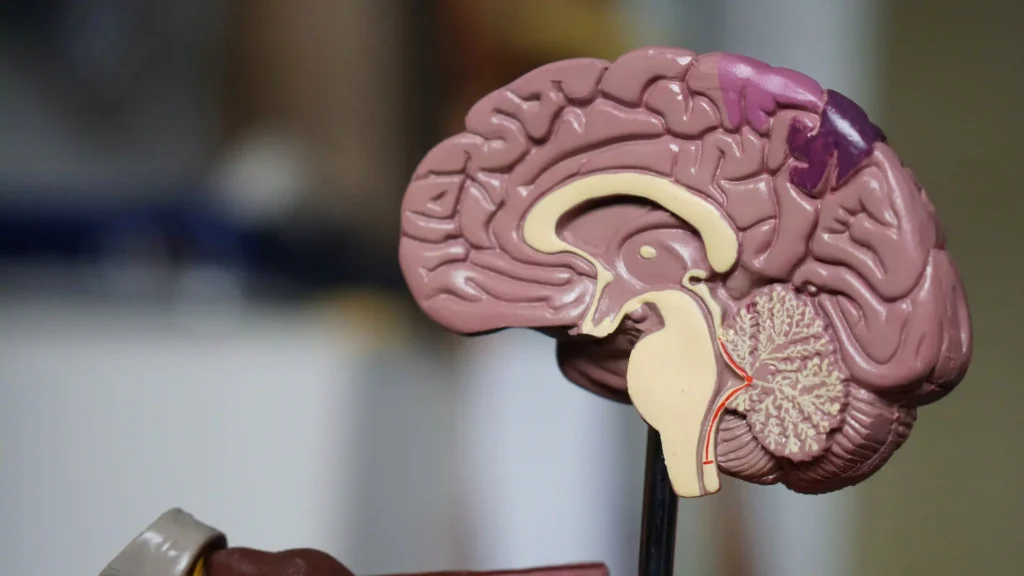Introduction

Alzheimer’s disease is a progressive neurodegenerative disease that is including millions within the population of different countries. A recent study discusses how exposure to the xenon gas can can open new ways to guard against this disease. This kind of study has created desire for its probable to change Alzheimer’s illness remedial. In this blog, we will talk about Inhaling GAS could Protect against Alzheimer’s Disease Study Suggests.
Table of Contents
Understanding Alzheimer’s Disease
Alzheimer’s is typically characterized by incremental and multifactorial process influenced by toxic proteins like amyloid beta plaques and neurofibrillary tangles. These proteins prevent proper communication of neurons and instead cause memory impairments and other related problems. The disease also bring about inflammation and oxidant molecule generation, which exacerbate the disease process. Alzheimer’s is a progressive disorder mainly occurring in the elderly but may also develop in younger people. Currently available treatment offer symptom control without modifying the disease course. It’s important to spotlight such mechanisms, especially when looking for brand solutions like xenon gas therapy, which cure the causes of neuronal injury.
The Role of Microglia in Alzheimer’s
Microglia therefore, is recognized as the brain’s immune cells that are specific for removing waste matter and supporting neuronal cells. But in Alzheimer’s, these cells act abnormally, triggered by the amyloid plaques and tau tangles, and churn out highly inflammatory substances that hurts neurons. This overstimulation is not healthy as it fosters a poisonous collective context that speeds up this deterioration of the mind. Alzheimer’s disease has been noted by scientist to be tamed by microglial regulation. Hence, if the functionalities of microglia are modulated therapeutically, then the inflammation processes can be reduced together with reduction of advancement of the diseases. Given that xenon gas exhibits anti-inflammatory capacity one could suggest that it may well influence microglial activation and thus prevent further neurons damage.
Xenon Gas: A Novel Approach
Neuroprotection from xenon, an anesthetic agent derived from the chemical element Xenon, has been an encouraged sign. Compared to conventional therapies, xenon activates only NMDA receptors which play an important role in modulation of brain activity. They found out that overstimulation of these receptors induces excitotoxicity, a critical cause of neuronal death in Alzheimer’s diseases. This makes xenon a unique oxidizer because it prevents over activity, while at the same time allowing normal functioning. These based on their safety and the method of administration, through inhalation, makes it ideal for use in therapeutic application. This kind of treatment targets both the cause and the sign of Alzheimer’s, making it prospect of new strategy in dealing with this difficult disease.
Study Findings: Xenon Gas Inhalation

Other researches of condiment such as xenon gas have shown that the non-corpuscular gas can shield man against Alzheimer’s ailments. Objective evidence of the efficacy of xenon inhalation therapy in enhancing cognition has been recorded in animal subjects. The gas above mentioned offered lower neuroinflammation, oxidative stress and excitotoxicity markers that are the leading causes of Alzheimer’s disease. In particular, involving the problem of neuronal support and restoration, one has to mention that xenon acts as a potent stimulator of oxygen supply to the brain. These observations indicate that xenon therapy is effective not only to reduce manifestations but also to treat the underlying causes of the pathological process. But as with any product that has shown only preclinical data indicating impressive findings, it remains to be seen what effects will transpire once it reaches human testing.
Potential Mechanisms of Action
Xenon gas incorporates multiple mechanisms and for this reason it can be used as a therapy for Alzheimer’s. Additionally, xenon reduces excitotoxicity of neurons by acting on NMDA receptors: neuronal activity is shielded from potency. It also controls microglial activation, inflammation, and changes the structure of a brain that is healthier. It is also important to remember that oxidative stress models the other process that is involved in the Alzheimer’s disease. Also, it will help WJ improve the blood flow in the brain and therefore oxygen and nutrients supply to the brain. These combined effects make xenon the innovative solution for Alzheimer’s treatment at all levels of the disease, allowing neuroprotection.
Implications for Future Treatments
Application of xenon gas treatment could revolutionize the treatment of Alzheimer’s. The technique is minimally invasive, and therefore, appropriate for elderly patients or patients with advanced disease stage. If found useful in human beings, xenon can be an added treatment regime or substitute for existing regimes. Apart from Alzheimer’s, xenon also has an extensive of other neurological disorders such Parkinson’s or stroke. Depending on the future developments in science the simple inhalation of xenon gas might get a status of a revolution in treatment of neurodegenerative diseases making millions of people’s lives happier.
Next Steps: Clinical Trials

Before inflexion can be used, it is important to perform some clinical trials on xenon gas to confirm the possibilities. The researchers hope to identify the dose and duration of xenon therapy and whether it has side effects in the Alzheimer patients. It will also conduct trials to determine its chronic impact and how well it may complement other therapies. First post-Phase I advances have included basic qualitative research such as in vitro but more quantitative, in vivo work is needed for practical uses. But, if the plan works out, then we could see xenon gas from a mere theoretical concept inpatient care to one of the popular treatments in the market a boon to the patients as well as the carers. The following few years should provide critical evidence regarding the applicability of using xenon gas in the treatment of Alzheimer’s. You can also learn about 5 Steps to Mental Wellbeing.
Conclusion
Xenon gas constitutes an outstanding opportunity in Alzheimer’s disease as it brings a new non invasive approach to fight this disease. Causal mechanisms of neuroprotection by xenon include excitotoxicity, inflammation and, oxidative stress, factors which are comprehensively covered by the gas. Although this therapy is still relatively experimental, its impact on patients’ quality of life with Alzheimer’s disease prognosis looks tremendously promising. After additional studies and clinical tests on the use of xenon gas, there is a potential to establish it as the basis for one of the Alzheimer’s treatments, which would open the path to the new methods of successful neurodegenerative disorders’ management.